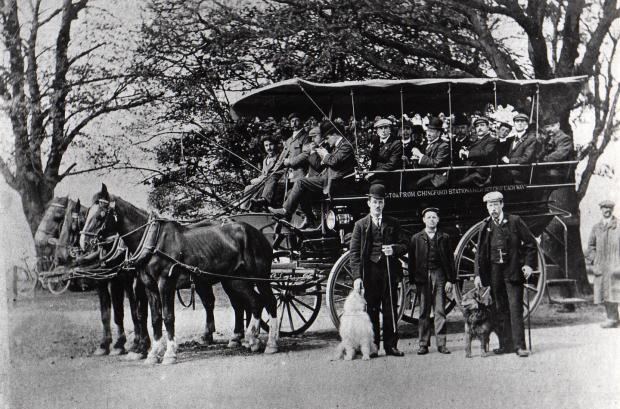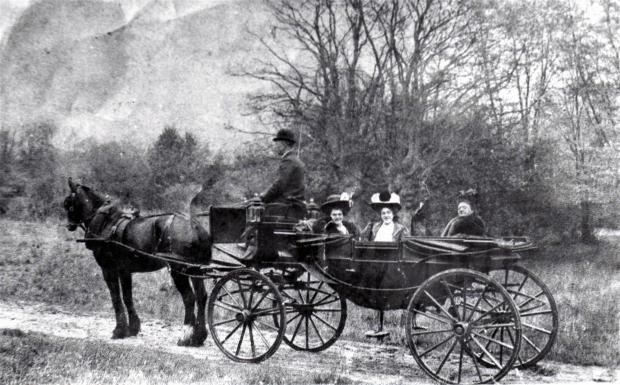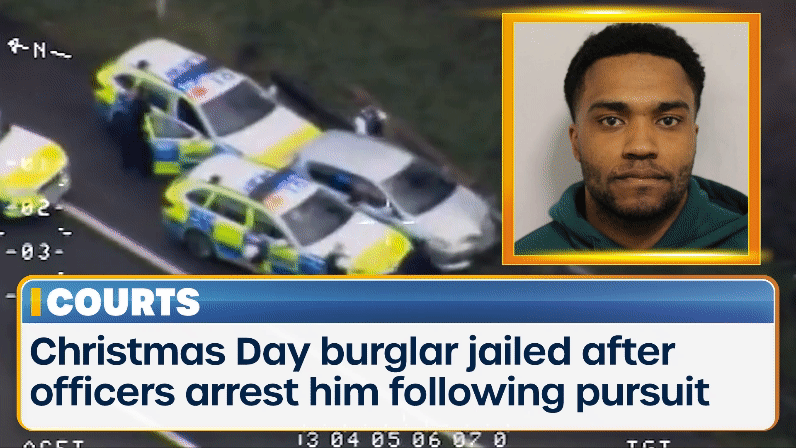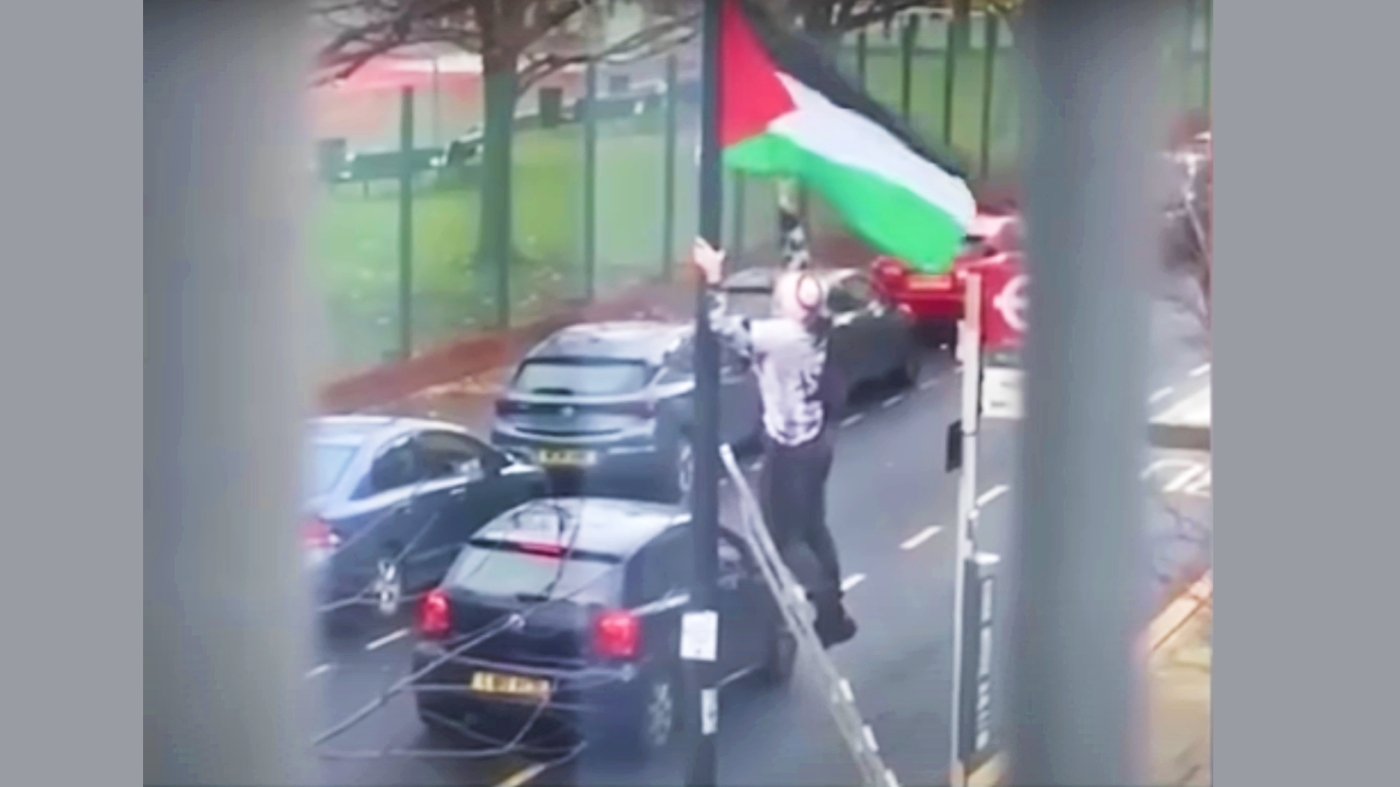Arthur George Askew was born in 1858. His father came to Loughton and started the family cartage business in 1861, but he died of consumption fairly young, so his wife Emma Askew continued running the business until 1898 when Arthur took it over, aged 40. He expanded the business under the name of A G Askew & Sons, until by 1914 there were about 40 horses based at their premises in Smarts Lane and Forest Road, Loughton. They were used to pull various vehicles for local traders, to fetch and carry as required. They were the local ‘removal men’ and ‘dustcart’ for the council. They ran large vehicles for special events like a coach firm today and provided a ‘taxi’ service with landaus for hire, with a driver, etc.
Arthur’s son Frank was born in 1896 and lived to be 100, dying early in 1997. I had the great pleasure of meeting him and recording his memories on several occasions.
Frank told me: “When I was about six years old (around 1902), we used to send vehicles to town to collect things like sacks of sugar for the local grocer, and I can remember that on a Saturday, or in the holidays, I used to sit in the front of the van on the bait (that was the horse’s food that we would put in his nosebag at midday) with my nose just looking over the top of the front of the van. On the very early trips I remember seeing horse-buses at the Bank. Then, a little later on, they were replaced by horse-trams, and I remember some used to run up and down Leytonstone High Road on rails in the ground. Then they got electric trams, and later, motor-buses.
Bulls Head pond on Loughton High Road, dated postcard 1905
“Sometimes my father would drive a wagonette that could have two horses, but more often only one was used, and then the wagonette could take eight people plus the driver. My father also had a number of horse-brakes used to take passengers to various events, or horse-drawn cabs for hire as a taxi service.
“There were a number of ponds used by horse-vehicles, which were driven through the water to get tile dust off the wheels and the horses’ legs, and if the water was clear enough the horses would have a drink too. We often used the one at the bottom of Warren Hill, sometimes called Bullshead pond after the pub opposite between Spring Grove and the Crescent. We also knew it as Alfonse’s pond because the family who lived at Newnham House, directly opposite the pond, was named Alfonse. Of course, in those days it could get very dusty as the roads were made of gravel, hoggin and sand. Later they used granite chips and rolled them into the road surface with a steam-roller. Eventually tarmac and asphalt were used.

Skylark horse-brake in 1910
“In the early days people from Walthamstow used to run vehicles out to the Robin Hood, but when my father took over the family business and started to expand it, he ran vehicles up to High Beach, which upset Chilton (the landlord of the Robin Hood), as he lost a fair bit of his trade. We used to have vehicles at Chingford station waiting for the trains, and then the driver would call out ‘Now for High Beach, sixpence, now for High Beach’ and then at High Beach it would be the same for Chingford. Sometimes the driver would pick up people who had come from Walthamstow or nearer into London, and they’d get to High Beach, and say ‘Where’s the sea?’ Well, towards Waltham Cross, in the dip, there were a lot of glasshouses growing cucumbers and the like, and when the sun caught them, our drivers would say ‘There’s the sea’ and it did look like it!

Landau near High Beach c1910
“My father also ran brakes for special outings, like the first time many local people were able to see an aeroplane in 1912. Some of our vehicles were used to take passengers from the fountain at Loughton, opposite the police station, up to Bell Common – that was 6d each way. There were thousands of people there, it was so crowded you couldn’t move. The plane was supposed to circle the water-tower at Epping, but it didn’t, it circled the church tower. Although the locals knew which tower was which, presumably the pilot didn’t!”
Frank told me many stories, some not yet published. He was a courteous man who was very patient with my questions and so interesting to listen to. I enjoyed chatting with him.
Georgina Green has been involved with local history in Redbridge, Waltham Forest and the Epping Forest area for 40 years and is the author of several local history books. Frank Askew features in her book “Keepers, Cockneys & Kitchen Maids” which was published in 1987 but has long been out of print.
https://www.guardian-series.co.uk/news/20251176.memories-transport-company-covered-epping-forest-east-london/




